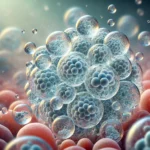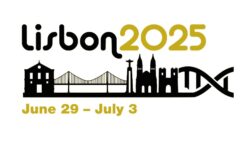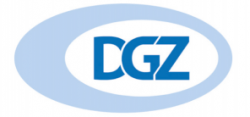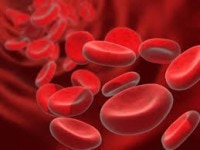Cross Regulation of Gene Expression 2025 Thank you Göttingen!
A Collection of RNA Biology articles for Translacore
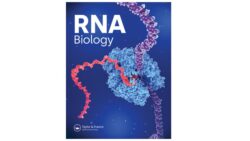
TRANSLACORE, a European network to coordinate research on translation regulation in cancer “Translation at the Crossroads: A European Perspective on Protein Synthesis and Cancer” This Special Collection of RNA Biology brings together original research articles and reviews from members of the European COST Action TRANSLACORE (CA21154), a network dedicated to…
Thank you Ribosome 2025 Cambridge for your invitation as Keynote speaker
Thrilled to be part of Lisboa 2025 on Nucleic Acid-Based Machines
Happy to co-organize RIBOMOD 2025 in Bologna
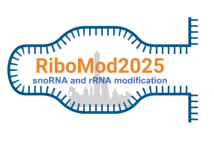
For details, See https://events.unibo.it/ribomod2025 Full Program of RIBOMOD2025 Abstract Book of RIBOMOD2025 The RNA Biology poster prize at RIBOMOD2025 was awared to Brittney M Remnant (York U., Canada) for her work on “The variant La protein Mlp1 is a snoRNA binding protein that influences U4/U6 di-snRNP assembly and splicing in…
Translacore is networking scientists involved in translational control in cancer

Translacore is a COST action (CA21154) aiming to develop a European network of excellence to foster basic research on mRNA translation in cancer. Translacore training school in Bioinformatics with Prof. Ola Larsson’s team, September 11-14, 2023, Karolinska Institutet, Stockholm, Sweden Biennale 2023: Where Science Meets Art, “Cycle of Health and…
Ribosome Fingerprints to help Cancer Diagnosis
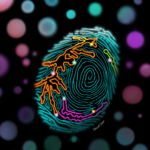
In an amazing collaboration with the Eva Maria Novoa Lab (CRG, Barcelona, Spain), … Milenkovic et al. demonstrate that rRNA modifications are differentially modified across tissues, developmental stages, and in disease. The authors show that rRNA modification patterns, also termed “epitranscriptomic rRNA fingerprints” are sufficient to accurately identify tissue of…
Diamond-Blackfan anemia @Global Bridges Madrid June 2024
Detecting Material State Changes in Condensates with DHM
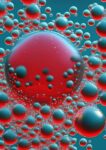
Digital Holographic Microscopy (DHM) was applied to detect membraneless biomolecular condensates and membrane-bound organelles without staining. The nucleolar optical thickness was defined for characterizing the material state of the nucleolus. Ribosome biogenesis is initiated in the nucleolus, a multiphase biomolecular condensate formed by liquid-liquid phase separation. The nucleolus is a…
RNA Society Meeting 2024. Thank you Edinburgh! May 28-June 2
China-UK Workshop on Molecular Haematopoiesis 2023: Thank you Tianjin!!

Thank you for an outstanding “China-UK Workshop on Molecular Haematopoiesis“ organized by my dear colleagues: Prof Tao CHENG, Prof Xiaofan ZHU, Prof Lihong SHI, and Dr Yang WAN (Institute of Hematology & Blood Diseases Hospital, Chinese Academy of Medical Sciences, National Key Laboratory for Blood Science, Tianjin Institute of Health…
35th Tokyo RNA Club. November 2023. Happy to be back to Japan!
Our long-term commitment to Diamond-Blackfan anemia
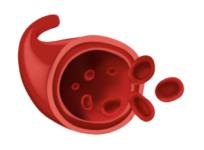
We are part of two European consortia: RiboEurope and DBAGeneCure aiming to understand the molecular basis and to develop therapeutics (gene therapy) for Diamond-Blackfan anemia (DBA). Diamond-Blackfan anemia is a bone marrow failure syndrome manifested notably by failure to produce red blood cells. Please watch our two educational video clips…
Watch us @ Cold Spring Harbor Asia – Awaji Yumebutai, Japan 2022
Glutamine & Nucleolar surveillance
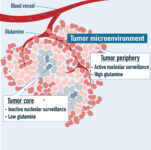
Nucleolar surveillance is a p53-dependent anti-tumoral pathway activated upon ribosome biogenesis dysfunction. It had remained unclear why liquid tumours respond better to ribosome biogenesis inhibitors than solid ones. In collaboration with the team of Tsuyoshi Osawa (U. Tokyo), we have revealed the importance of the intra tumoral concentration of the…
EMBO RIBOSOME 2022, August 17-21, Engelberg
Dihydrouridine on messenger RNAs slows ribosomes!
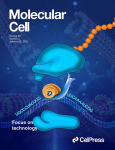
On the cover: In this issue of Molecular Cell, Finet et al. (pp. 404–419) use a transcriptome-wide approach to reveal that the dihydrouridine RNA modification (the snail) is present on eukaryotic mRNAs. They show that dihydrouridylated codons are translated more slowly by the ribosome (blue shapes) and that modification of the…
Fibrillarin is required for Neural Crest Cell maturation
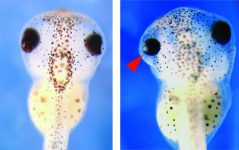
Ribosomes are essential nanomachines responsible for protein production in all cells. Ribosomopathies are diseases caused by improper ribosome formation due to mutations in ribosomal proteins or ribosome assembly factors. Such diseases primarily affect the brain and blood, and it is unclear how malfunctioning of a process as general as ribosome…
The Nucleolus as a Multiphase Liquid Condensate
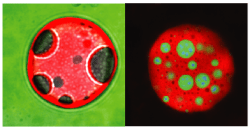
The nucleolus is the most prominent nuclear body and serves a fundamentally important biological role as a site of ribonucleoprotein particle assembly, primarily dedicated to ribosome biogenesis. Despite being one of the first intracellular structures visualized historically, the biophysical rules governing its assembly and function are only starting to become…
The “iNo score”: Towards bringing the nucleolus in the clinics
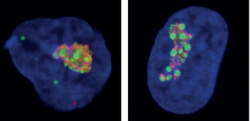
Using the iNo score to discriminate normal from altered nucleolar morphology, with applications in basic cell biology and potential in human disease diagnostics Ribosome biogenesis is initiated in the nucleolus, a cell condensate essential to gene expression, whose morphology informs cancer pathologists on the health…
International Meeting of the German Society for Cell Biology, Leipzig, Germany, 17-19 September 2018
The 11th International Ribosome Synthesis Meeting, Magog, Canada, August 1-5, 2018

The 11th International Ribosome Synthesis meeting will take place in Magog, Mont Orford, near Montreal, Canada form the 1-5 August 2018 at Manoir des Sables. Co-organizers: Sherif Abou Elela (U. Sherbrooke, Canada) Ute Wieden-Kothe (U. Lethbridge, Alberta, Canada) Denis LJ Lafontaine (U. Brussels, Belgium) Tom Meier (Albert Einstein, New York,…
Curing cancer with Daffodils?

Pellegrino et al., have shown that haemanthamine inhibits both ribosome biogenesis and function, providing for the first time the molecular basis of the anticancer properties of this natural compound used for centuries in folk medicine. The ribosome biogenesis inhibition triggers an antitumoral surveillance response leading to p53 stabilization (nucleolar stress).…
Diamond Blackfan Anemia: Novel Mechanisms And Their Implications For Therapies
Involvement of U3 and U8 box C/D snoRNAs in tumorigenesis
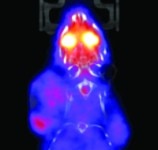
Small nucleolar RNAs (snoRNAs) are emerging as a novel class of proto-oncogenes and tumor suppressors; their involvement in tumorigenesis remains unclear. The box C/D snoRNAs U3 and U8 are upregulated in breast cancers. Here we characterize the function of human U3 and U8 in ribosome biogenesis, nucleolar structure, and tumorigenesis.…
It’s a SPOUT! TSR3 is the long sought 18S ribosomal RNA aminocarboxypropyl transferase
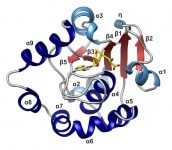
The chemically most complex modification in eukaryotic rRNA is the conserved hypermodified nucleotide N1-methyl-N3 aminocarboxypropyl pseudouridine (m¹acp³Ψ) located next to the P-site tRNA on the small subunit 18S rRNA. While S-adenosylmethionine was identified as the source of the aminocarboxypropyl (acp) group more than 40 years ago, the enzyme catalyzing the…
“Ki-67 organizes heterochromatin and is required for nucleolar genesis”
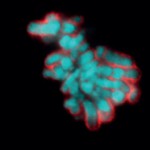
In Collaboration with Daniel Fisher (Montpellier Institute of Molecular Genetics – CNRS, Université de Montpellier), we showed that Ki-67 plays an important role during nucleologenesis. Specifically, we showed that Ki-67 is important for PR (Perichromosomal Region) formation: During mitosis, the nucleolus undergoes a dramatic cycle of disassembly and reassembly.…
“Kill The Sammson, Kill The Melanoma”
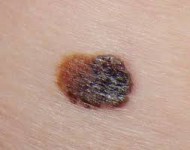
In a work led by Jean-Christophe Marine (VIB, KU Leuven) we contributed to the characterization of the lineage-specific long non-coding RNA Sammson. Sammson is only expressed in melanoma cells. When Sammson’ expression is shut, melanoma cells die, principally of loss of mitochondrial function. Focal amplifications of chromosome 3p13–3p14 occur in…
“View From A Bridge”: A New Perspective on Eukaryotic rRNA Base Modification

Eukaryotic rRNA are modified frequently, although the diversity of modifications is low: in yeast rRNA, there are only 12 different types out of a possible natural repertoire exceeding 112. All nine rRNA base methyltransferases and one acetyltransferase have recently been identified in budding yeast, and several instances of crosstalk between…
10th Ribosome Synthesis Meeting in Brussels, Belgium, 19-23 August 2015

Organizing committee: Sander GRANNEMAN (University of Edinburgh)Katrin KARBSTEIN (The SCRIPPS Research Institute, Florida)Denis LAFONTAINE (University of Brussels)Tom MEIER (Albert Einstein College of Medicine, New York)Joost ZOMERDIJK (University of Dundee) Keynote lectures:Prof David TOLLERVEY, Wellcome Trust Center for Cell Biology, U. EdinburghProf Nenad BAN, ETH, Zurich
